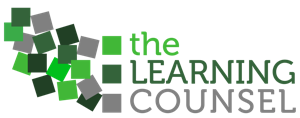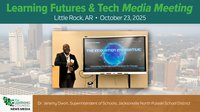Being proactive about safety and security means anticipating possible threats and addressing them before they become problems later on. Public health and safety officials would agree that a proactive approach is much more effective than a reactive approach, in which incidents are addressed only after they occur. The same idea holds true when it comes to safeguarding students online.
Taking a proactive approach to Internet safety requires not only being able to see what’s happening on the network in real time, but also having visibility into key trends. Early detection of emerging threats, which is crucial for prevention, relies heavily on high-quality data and analytics.
The best online safety tools not only give users the flexibility to monitor students’ online experiences very closely, such as which websites and applications students have access to. They also provide exceptional reporting and insight into who’s trying to access specific types of content and when. Equipped with this information, school and district leaders can then more efficiently and effectively channel their resources to keep students safe online.
Here are three ways that having deeper insight into students’ online activity can help K-12 leaders effectively safeguard students.
Block inappropriate online activity.
One of the challenges to keeping students safe online is that Internet content is constantly changing, with new sites and applications emerging every day. Filters need constant attention. Sometimes there can be a lag between the time new content appears online and when it’s correctly categorized within a web filtering platform.
By continually monitoring which sites and applications students are trying to access on school-issued devices, K-12 leaders can be proactive in blocking access to inappropriate content without having to wait for this categorization process to occur. For instance, if leaders see that students are suddenly flocking to a new site that has emerged, school personnel can evaluate this site to see if it’s something they should add to their list of blocked sites right away.
Understand how students are trying to circumvent web filtering.
While most students behave responsibly online, some know how to get around even the best school Internet filters using HTTP proxies or Virtual Private Network (VPN) tunneling applications.
There are dozens of free or low-cost applications that allow students to circumvent their school’s filtering software by establishing an encrypted VPN connection from their device to the Internet, so they can access websites anonymously. These rogue apps are easily found online; for instance, if you search the web for “how to bypass school Internet filters,” you’ll get pages and pages of search results with links to these various apps and detailed instructions for using them.
Some of these applications were created for good reasons. For instance, Psiphon began as a project from the Citizen Lab at the University of Toronto to give people living under repressive regimes a way to circumvent Internet censorship. But when students use these apps to get around their school web filter, it creates serious liability issues for K-12 administrators.
By monitoring which sites and applications students are accessing online, K-12 leaders can better understand how students might be using proxies and tunneling apps to circumvent their district’s filtering solution—and then take appropriate steps to block these applications on their network.
Identify risky online activities early so that students can be educated about the dangers and staff can be on alert.
When K-12 leaders understand students’ online activity, such as what content students are sharing and where they’re spending their time online, then leaders can reach out to students, educating and warning them about the dangers. The goal is to head off specific behaviors before they become more widespread. Doing so takes recognizing the problem early and informing staff what to watch for while simultaneously planning how to quickly start educating the students.
For instance, suppose leaders see that students are accessing a new website encouraging students to engage in risky behaviors, such as choking themselves to experience a high. Not only can filtering technology block access to that site on school computers, but staff and parents can be alerted about what to watch for and an informational assembly or school announcement can teach students why this specific type of behavior is so dangerous.
Effective Internet safety initiatives must include an educational component like this so that students better understand the risks and thus make better choices both in and outside of school. Addressing specific risks and behaviors as soon as they arise is critical.
The filtering capabilities of school networks should give all of these deep insights into students’ online activity and it should do so in real time. Not only does that let K-12 leaders recognize and understand online behavior trends as they emerge, it leads to more effective Internet safety measures in general. Armed with this information, school leaders can spend their limited time and resources on the biggest threats as they evolve, not after they are already entrenched. Knowledge ultimately leads to safer learning environments for everyone.
About the Author
Steve Stolfi is the chief commercial officer at Ativion who has a long history of advising and supporting companies and schools on how to manage remote access and cybersecurity.











